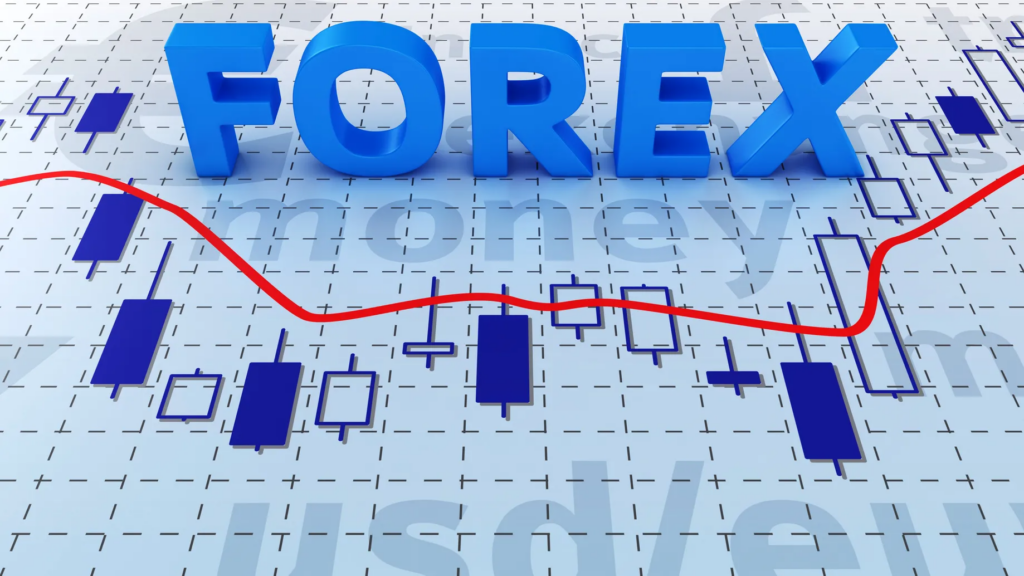Understanding Forex Trading: Strategies for Success in the Global Currency Market
Forex trading, also known as foreign exchange trading, is the process of buying and selling currencies in the global market. It is a decentralized market where participants engage in currency exchange for various purposes, including investment, speculation, hedging, and international trade. In this article, I will discuss the fundamental aspects of Forex trading, including how the market works, the importance of understanding currency pairs, and strategies for both beginners and experienced traders. Additionally, I will delve into risk management, technical and fundamental analysis, selecting a Forex broker, utilizing trading tools, and common pitfalls to avoid. By the end of this article, you will have a comprehensive understanding of Forex trading and the strategies required for success.
What is Forex trading?
Forex trading involves buying one currency and selling another simultaneously, with the aim of profiting from fluctuations in exchange rates. Unlike the stock market, which has a central exchange, Forex trading takes place over-the-counter (OTC) through a network of banks, financial institutions, and individual traders. The Forex market operates 24 hours a day, five days a week, allowing traders to engage in transactions at any time. The combination of its high liquidity, low transaction costs, and leverage opportunities makes Forex trading an attractive investment option for many individuals.

How does the Forex market work?
The Forex market operates through currency pairs, which represent the exchange rate between two currencies. The first currency in the pair is the base currency, while the second currency is the quote currency. For example, in the EUR/USD pair, the euro is the base currency, and the US dollar is the quote currency. The exchange rate indicates how much of the quote currency is needed to purchase one unit of the base currency. Forex trading involves speculating on the direction in which the exchange rate will move. If a trader believes the euro will strengthen against the US dollar, they will buy the EUR/USD pair. Conversely, if they anticipate the euro weakening, they will sell the pair.
Understanding currency pairs is crucial in Forex trading, as each pair has its own characteristics and behavior. Major currency pairs, such as EUR/USD, GBP/USD, and USD/JPY, are the most actively traded and have high liquidity. Cross currency pairs, such as EUR/GBP and GBP/JPY, do not involve the US dollar and are popular among traders looking for more diverse opportunities. Exotic currency pairs, on the other hand, involve currencies from emerging economies and are less frequently traded. Familiarizing yourself with different currency pairs and their unique dynamics is essential for success in Forex trading.
Basic Forex trading strategies for beginners
For beginners, it is important to start with a solid foundation of basic Forex trading strategies. One popular strategy is trend following, where traders identify and follow the prevailing trend in the market. This can be done through technical analysis, which involves analyzing price charts and indicators to identify patterns and trends. Another strategy is range trading, where traders identify price levels of support and resistance and trade within the range. This strategy is suitable when the market lacks a clear trend and is consolidating. Breakout trading is another common strategy, where traders aim to profit from sharp price movements that occur when the price breaks out of a range or a significant level.
It is important for beginners to practice proper risk management and money management techniques. This involves setting realistic profit targets and stop-loss levels, as well as determining the appropriate position size for each trade. It is also advisable to start with a demo trading account to gain experience and test different strategies without risking real money. As a beginner, it is crucial to have a disciplined approach to Forex trading and to continuously learn and adapt to the ever-changing market conditions.
Advanced Forex trading strategies for experienced traders
Experienced traders often employ more complex strategies to maximize their profits in the Forex market. One such strategy is carry trading, where traders take advantage of interest rate differentials between currencies. They borrow a currency with a low interest rate and invest in a currency with a higher interest rate, profiting from the interest rate differential. Another advanced strategy is scalping, where traders aim to make quick profits from small price movements. This strategy requires quick decision-making and the ability to execute trades within seconds or minutes.
Other advanced strategies include breakout pullback continuation, mean reversion, and Fibonacci retracements. These strategies involve a deeper understanding of technical analysis and require traders to analyze price patterns, support and resistance levels, and Fibonacci ratios. It is important for experienced traders to constantly refine their strategies and adapt to market conditions. This may involve incorporating fundamental analysis, which involves analyzing economic indicators, news events, and geopolitical factors that can impact currency movements.
Risk management in Forex trading
Risk management is a crucial aspect of successful Forex trading. It involves identifying and mitigating potential risks to protect your trading capital. One key aspect of risk management is setting appropriate stop-loss levels. A stop-loss order is an instruction to close a trade at a predetermined price level if it moves against you. This helps limit potential losses and prevents emotional decision-making. Another risk management technique is diversification, which involves spreading your investments across different currency pairs and asset classes. By diversifying, you reduce the impact of any single trade or market event on your overall portfolio.
Additionally, it is important to manage your leverage effectively. Leverage allows traders to control larger positions with a smaller amount of capital. While leverage can amplify profits, it can also magnify losses. It is crucial to understand the risks associated with leverage and use it judiciously. Risk management also involves having a realistic trading plan and sticking to it. This includes determining your risk tolerance, setting profit targets, and adhering to a disciplined trading strategy.
The role of technical analysis in Forex trading
Technical analysis is a widely used approach in Forex trading that involves analyzing historical price data and using various technical indicators to predict future price movements. Traders use charts to identify patterns, trends, and support and resistance levels. They also utilize indicators such as moving averages, oscillators, and Fibonacci retracements to confirm their trading decisions. Technical analysis helps traders identify entry and exit points and provides insights into market sentiment and potential price reversals.
While technical analysis is a valuable tool, it is important to note that it is not foolproof. It is essential to combine technical analysis with other forms of analysis, such as fundamental analysis, to make well-informed trading decisions. Traders should also be aware of the limitations of technical analysis and avoid relying solely on it. By combining various forms of analysis, traders can gain a comprehensive understanding of the market and make more accurate predictions.

Fundamental analysis in Forex trading
Fundamental analysis involves analyzing economic indicators, news events, and geopolitical factors that can impact currency movements. This type of analysis focuses on the underlying factors that drive supply and demand in the Forex market. Traders monitor economic indicators such as GDP growth, inflation rates, interest rates, and employment data to assess the health of an economy and its currency. They also analyze news events and geopolitical developments that can cause significant volatility in the market.
Fundamental analysis helps traders identify long-term trends and make informed trading decisions. For example, if a country’s economy is growing at a robust pace and its central bank is expected to raise interest rates, traders may anticipate the currency to strengthen. Conversely, if a country is facing economic challenges or political instability, traders may expect the currency to weaken. By staying informed about economic and geopolitical developments, traders can gain a competitive edge in the Forex market.
Choosing a Forex broker
Selecting a reputable Forex broker is crucial for successful trading. A Forex broker acts as an intermediary between you and the market, executing your trades and providing access to trading platforms, charts, and other tools. When choosing a broker, it is important to consider factors such as regulation, reputation, customer support, trading platforms, spreads, and fees. Regulated brokers adhere to strict regulatory standards, providing a higher level of security and protection for your funds. It is also important to choose a broker with a user-friendly trading platform that suits your trading style and preferences.
Customer support is another crucial aspect to consider. A reliable broker should offer prompt and knowledgeable customer support to address any issues or concerns you may have. Additionally, it is important to consider the spreads and fees charged by the broker. Lower spreads and fees can significantly impact your profitability in the long run. Finally, it is advisable to open a demo account with a broker before committing real money. This allows you to test the broker’s platform and services without risking your capital.
Forex trading tools and resources
There are numerous tools and resources available to Forex traders that can enhance their trading experience and profitability. One such tool is an economic calendar, which provides a schedule of upcoming economic events and indicators that can impact currency movements. Traders can use this information to plan their trades and avoid potential market volatility. Another useful tool is a trading journal, where traders can record their trades, strategies, and emotions. By reviewing past trades, traders can identify patterns and areas for improvement.
Technical analysis tools, such as charting platforms and indicators, are also essential for Forex traders. These tools help traders analyze price patterns, identify trends, and make informed trading decisions. Additionally, there are numerous online courses, webinars, and educational resources available to traders. These resources can help traders enhance their knowledge and skills, regardless of their level of experience. It is important to continuously educate yourself and stay updated with the latest developments in the Forex market.
Common pitfalls to avoid in Forex trading
While Forex trading offers immense opportunities for profit, it also carries risks. It is important to be aware of common pitfalls and mistakes that traders often make and take steps to avoid them. One common pitfall is overtrading, where traders execute too many trades and become emotionally attached to their positions. This can lead to impulsive decisions and excessive risk-taking. It is important to have a disciplined approach and adhere to your trading plan.
Another common pitfall is failing to use proper risk management techniques. It is crucial to set realistic profit targets and stop-loss levels and to manage your leverage effectively. Greed and fear are common emotions that can cloud judgment and lead to poor decision-making. It is important to remain disciplined and avoid making emotional decisions based on short-term market fluctuations. Finally, it is essential to continuously educate yourself and adapt to changing market conditions. The Forex market is dynamic, and strategies that may have worked in the past may not be effective in the future.




